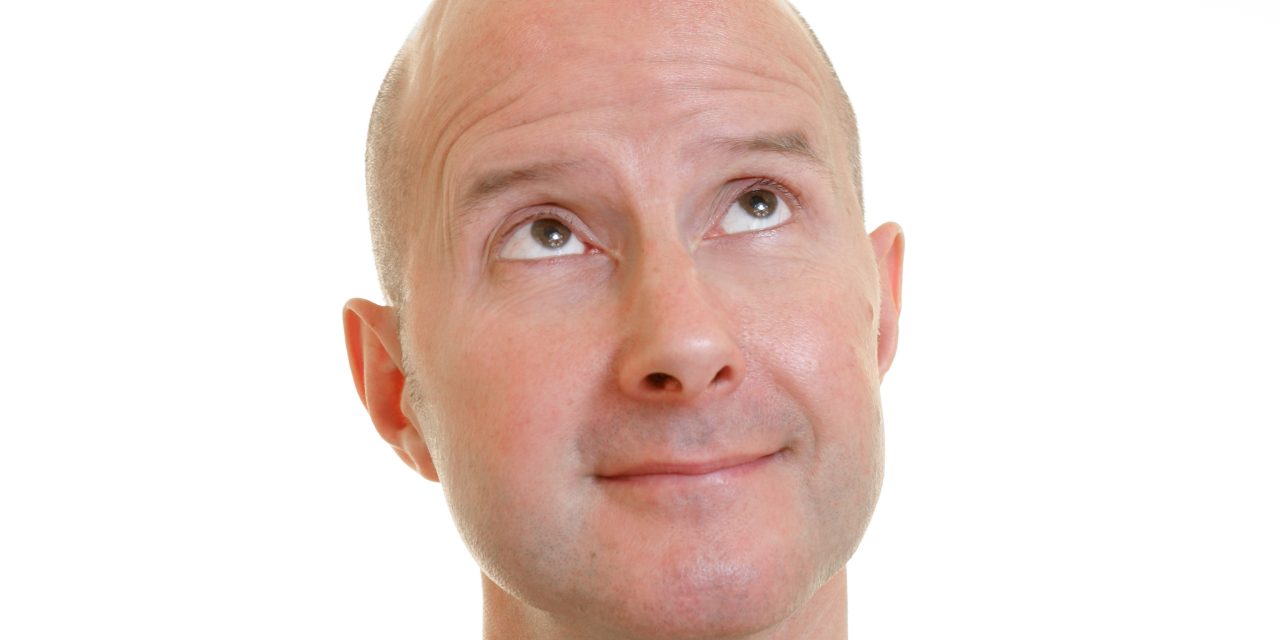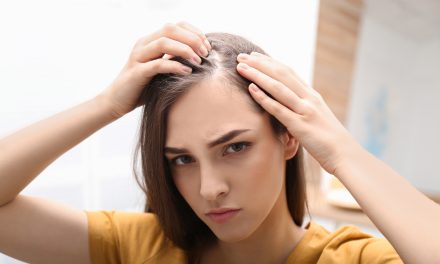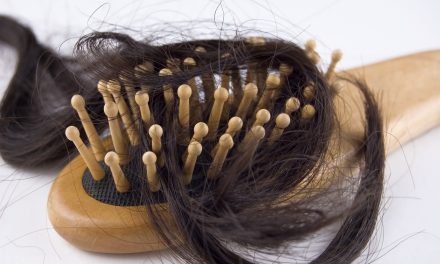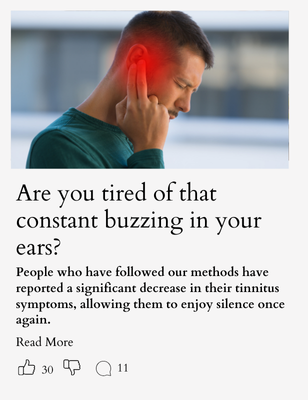Hair loss in men can be a distressing issue, affecting self-esteem and confidence. However, the good news is that in today’s world, there are various options for treating and managing hair loss. In this article, we’ll explore the different causes of hair loss in men, as well as present valuable information on lifestyle modifications, medical treatments, and alternative solutions to help cure hair loss.

Understanding hair loss is the first step in tackling the issue. Hair loss can result from multiple factors, including genetics, hormonal imbalances, nutritional deficiencies, and stress. By identifying the root cause, one can develop an effective course of action to address and potentially cure their hair loss. We’ll delve into the available treatments, and discuss the pros and cons of each method, leaving readers with a deeper understanding of how to combat hair loss in men.
Key Takeaways
- Identifying the root cause of hair loss is essential for an effective treatment plan
- A combination of lifestyle changes, medical treatments, and alternative remedies may be necessary to address hair loss
- It’s crucial to manage the psychological impact of hair loss and be aware of costs and insurance considerations when seeking treatment.
Understanding Hair Loss
Causes of Hair Loss
Hair loss can be caused by various factors, such as age, stress, hormonal imbalances, and medical conditions. Some causes are temporary, like illness or nutrient deficiency, while others may be permanent, such as genetics or scarring from trauma (source: Healthline).
Types of Hair Loss
There are several types of hair loss, including:
- Androgenic Alopecia: The most common type, affecting both men and women, results from hormonal changes that cause hair follicles to shrink.
- Alopecia Areata: An autoimmune disorder where the immune system attacks hair follicles, causing patchy hair loss.
- Telogen Effluvium: A temporary type of hair loss caused by an event, such as illness or stress, which results in more hairs entering the resting phase and eventually shedding.
Genetics and Male Pattern Baldness
Male pattern baldness, also known as androgenic alopecia, is a type of hair loss that affects people assigned male at birth (source: Cleveland Clinic). Genetics play a significant role in male pattern baldness, as the inheritance of certain genes from either parent can affect the sensitivity of hair follicles to the hormone dihydrotestosterone (DHT). In predisposed individuals, DHT binds to hair follicles, ultimately causing them to shrink and resulting in hair loss.
The Role of Hormones
Hormones, especially DHT, play a crucial role in hair loss. DHT is a byproduct of testosterone, and men with higher levels of it are more prone to hair loss. An enzyme called 5-alpha-reductase converts testosterone into DHT, which binds to hair follicle receptors (source: WebMD). This binding results in a miniaturization of the hair follicle and eventually, hair loss.
In conclusion, understanding the causes and types of hair loss, the role of genetics, and the impact of hormones can help individuals diagnose and determine the best course of treatment for their hair loss. Early intervention and proper management can help maintain hair health and prevent or slow down the progression of hair loss.
Lifestyle and Hair Health
Impact of Diet on Hair
A balanced diet plays a significant role in maintaining healthy hair. Consuming adequate levels of protein, iron, vitamins, and minerals can contribute to hair strength and growth. For example, a balanced diet can help you maintain optimal hair health, while deficiencies of essential nutrients may lead to hair thinning and loss. Foods rich in nutrients that support hair growth include:
- Protein sources: eggs, lean meats, fish, dairy, and beans
- Iron-rich foods: spinach, kale, broccoli, and fortified cereals
- Vitamins and minerals: whole grains, nuts, seeds, and green leafy vegetables
Stress and Your Hair
Prolonged stress can negatively impact hair health, potentially leading to hair thinning and loss. Stress disrupts the natural hair cycle, forcing hair into the shedding phase earlier than normal. To minimize the effects of stress on your hair, practice stress reduction techniques such as:
- Regular exercise: yoga, cardio, or weightlifting
- Mindfulness meditation: focusing on the present moment
- Getting enough sleep: at least 7 to 8 hours per night
Hair Care and Styling Habits
Proper hair care can protect your hair from damage and maintain its overall health. Avoiding harsh treatments and hairstyles can prevent unnecessary hair breakages and minimize hair thinning. To support your hair health, consider adopting some of the following hair care habits:
- Use combs with wider spaces between the bristles, reducing tangles and breakages.
- Avoid tightly pulled hairstyles like ponytails or cornrows, which can stress hair follicles.
- Limit the use of heat tools like hair dryers, straighteners, and curlers, opting for gentle air-drying instead.
- Apply hair-friendly products, such as minoxidil (Rogaine), to promote hair growth and increase hair thickness.
Medical Considerations
When to See a Dermatologist
Hair loss can be both temporary and permanent, but when it becomes a concern, it’s essential to consult a dermatologist. They are skin experts who specialize in diagnosing and treating various skin, hair, and nail conditions. Key indicators that it’s time to see a dermatologist include:
- Sudden or excessive hair loss
- Patchy hair loss spots
- Red, irritated, or inflamed scalp
- Changes in hair texture or growing less hair
Medical Conditions Leading to Hair Loss
Several medical conditions can cause hair loss in men; these include:
- Androgenetic Alopecia: This is the most common cause of hair loss in men, also known as male-pattern baldness. It is generally characterized by a receding hairline and thinning on the crown. It has strong links to genetics and hormone levels.
- Alopecia Areata: This can result in patchy hair loss and is associated with an autoimmune response in the body.
- Telogen Effluvium: This type of hair loss is usually temporary and caused by stress, illness, or trauma.
- Tinea Capitis: A fungal infection of the scalp that leads to hair loss in patches.
- Trichotillomania: This is an impulse-control disorder that results in the urge to pull out one’s hair.
Scalp Biopsy and Diagnosis
A scalp biopsy is a useful diagnostic tool that can help determine the underlying cause of hair loss. Dermatologists usually take samples from the skin or pluck a few hairs from the scalp to examine under a microscope. This helps to evaluate the hair roots and identify any potential infections responsible for hair loss.
In some cases, a dermatologist might also use light microscopy. In this technique, a special instrument is used to examine the hairs trimmed at their bases to gain further insights into the cause of hair loss.
Being knowledgeable about the various medical conditions that lead to hair loss and understanding when to consult a dermatologist can help men address their hair loss concerns effectively. Early diagnosis and appropriate treatment can often lead to better outcomes in managing hair loss and, in some cases, slowing or reversing its effects.
Hair Loss Treatments
Minoxidil (Rogaine)
Minoxidil, commonly known as Rogaine, is a topical treatment for hair loss in men. It is FDA-approved and available over the counter, making it a popular choice. Minoxidil helps slow down hair loss and promotes hair regrowth. To be most effective, it should be applied twice daily on the scalp. It may cause side effects such as skin irritation and increased heart rate.
Finasteride (Propecia)
Finasteride is an FDA-approved prescription drug used to treat male hair loss. Also known as Propecia, it is taken in pill form and works by inhibiting the conversion of testosterone to dihydrotestosterone (DHT), a hormone responsible for hair loss in some men. Finasteride can slow hair loss and stimulate hair regrowth, but it may take several months to see noticeable results. Side effects can include sexual dysfunction and depression.
Dutasteride
Oral Dutasteride is another medication that helps treat hair loss in men by reducing DHT levels, similar to Finasteride. Although not currently FDA-approved specifically for hair loss treatment, it is prescribed off-label by some doctors. Dutasteride is more potent than Finasteride, making it potentially more effective for hair regrowth but also more likely to cause side effects. Users should discuss potential risks and benefits with their healthcare provider before starting this treatment.
In summary, Minoxidil, Finasteride, and Dutasteride are common treatments for hair loss in men. While each has its benefits and potential side effects, proper consultation with a medical professional can help determine the most suitable option for individual needs.
Advanced Hair Loss Solutions
Hair Transplant Surgery
Hair transplant surgery is a popular and effective solution for men experiencing advanced hair loss. This procedure involves removing hair follicles from a donor area (typically the back or sides of the head) and transplanting them to the areas where hair loss has occurred. There are two main methods of hair transplant surgery: Follicular Unit Transplant (FUT) and Follicular Unit Extraction (FUE).
- FUT: In this procedure, a strip of skin with hair is removed from the donor area, and the individual hair follicles are separated under a microscope. These follicules are then transplanted to the balding areas.
- FUE: In this method, individual hair follicles are extracted directly from the donor area using a specialized tool, and then transplanted to the recipient area.
Both methods have shown positive results, and the choice between them depends on factors such as the patient’s preference, budget, and the surgeon’s recommendation based on the individual case (source).
Laser Therapy for Hair Growth
Laser therapy for hair growth, also known as Low-Level Laser Therapy (LLLT), is a non-invasive treatment that uses red light to stimulate hair follicles and promote hair growth. This can be an effective solution for men experiencing hair loss, as clinical trials have demonstrated improvements in hair density and overall hair growth when using LLLT devices (source).
LLLT can be administered using handheld devices like laser combs, or through wearable devices such as laser caps or helmets. Treatment typically involves wearing the device for a specific amount of time on a regular basis. It is important to note that LLLT is generally considered a supplementary therapy, and may be more effective when used in conjunction with other hair loss treatments.
In conclusion, advanced hair loss solutions like hair transplant surgery and laser therapy for hair growth can provide effective results for men experiencing significant hair loss. It is essential to consult with a medical professional or hair restoration specialist to determine the most appropriate treatment option based on individual circumstances.
Alternative Remedies and Supplements
Over-the-Counter Options
There are several over-the-counter options available to help combat men’s hair loss. One popular choice is minoxidil, which is a topical solution that has been proven to stimulate hair growth and slow down the hair loss process. Another option is finasteride, a medication typically prescribed by a doctor, which inhibits the hormone responsible for hair loss. Both of these options have shown promising results, but it’s important to consult with a healthcare professional before starting any new treatment.
Natural Supplements and Vitamins
In addition to over-the-counter medications, there are various natural supplements and vitamins that can help promote hair growth. Some popular choices include:
- Biotin: A B-vitamin known for promoting hair growth and maintaining healthy hair
- Saw palmetto: A plant extract that may help inhibit the hormone responsible for hair loss
- Vitamin D: A vitamin that plays a role in maintaining healthy hair follicles
- Vitamin A: Essential for cell growth, including hair
To further support hair health, consider incorporating nutrients like zinc, iron, niacin, selenium, and omega fatty acids into your diet or supplement regimen. These vitamins and minerals are also crucial for healthy hair growth and maintenance.
Home Remedies
While there is no definitive cure for hair loss, some home remedies can help improve the condition of hair and promote growth:
- Scalp massages: Massaging the scalp can help increase blood flow and stimulate hair follicles, potentially promoting growth.
- Essential oils: Some essential oils, such as rosemary, lavender, and cedarwood, have been suggested to promote hair growth when combined with a carrier oil and massaged into the scalp.
- Stress reduction: High stress levels are often linked to hair loss. Practicing stress-relieving techniques, such as meditation or yoga, might help improve hair health.
Overall, it is important to remember that maintaining a balanced diet, practicing good hair care habits, and consulting with a healthcare professional are essential steps in tackling hair loss. The research-backed supplements and remedies mentioned above can be a helpful addition to a well-rounded approach.
Managing Side Effects
Dealing with Itching and Swelling
It is not uncommon for individuals experiencing hair loss to encounter side effects such as itching and swelling of the scalp. One popular treatment for hair loss, minoxidil, has been known to cause an irritated scalp in some men. To manage these side effects, consider the following tips:
- Switch to a foam formulation: If you are using a liquid minoxidil product, switching to a foam formulation could potentially reduce the risk of experiencing an irritated and itchy scalp.
- Use a gentle shampoo: Opt for mild, sulfate-free shampoos that are specifically designed to soothe and nourish the scalp. This may help alleviate itching and irritation.
- Apply a soothing ointment: Over-the-counter hydrocortisone creams or ointments can help reduce itchiness, redness, and swelling when applied to the affected area.
Sexual Side Effects
Some hair loss treatments may cause changes in sex drive or other sexual side effects. While these side effects are uncommon and typically mild, it is essential to be aware of them and consult with a healthcare professional if you notice any significant changes. To help manage potential sexual side effects, consider the following suggestions:
- Monitor changes: Keep track of any changes in your sexual function and share this information with your healthcare provider. They may adjust your treatment plan or suggest alternatives.
- Open communication: Maintain open communication with your partner about any changes in your sex drive or sexual function. This can help alleviate any undue stress or anxiety related to the side effects of your hair loss treatment.
- Seek professional help: If you are experiencing persistent sexual side effects, consider seeking help from a qualified therapist or counselor who specializes in addressing sexual health concerns.
By being aware of potential side effects and adopting these management strategies, individuals undergoing hair loss treatments can minimize discomfort and maintain their overall health and well-being.
Prevention Strategies
Preventing Further Hair Loss
Preventing hair loss can be achieved through various methods that focus on maintaining hair health and reducing contributing factors. One possible solution is to follow a Mediterranean diet, which consists of raw vegetables, fresh herbs, and other beneficial nutrients identified in a 2018 study as reducing the risk of androgenic alopecia (female pattern baldness).
Another option for addressing alopecia areata is the use of certain wavelengths of red light, as reported by Men’s Health. This non-invasive treatment option stimulates hair growth through light therapy, providing an alternative to medications that work on the same principle.
For those looking for a more proactive approach, minoxidil is a Food and Drug Administration (FDA) approved over-the-counter medication that helps prevent hair loss. You can find minoxidil at a 5% strength as a solution or foam that is applied directly to the scalp.
Maintaining Healthy Hair Density
Maintaining hair density can be achieved through a combination of the right nutrition, proper hair care techniques, and implementing preventative measures early on. Consider the following tips to keep your hair healthy:
- Eat a balanced diet: Ensure your diet includes essential vitamins and nutrients for hair growth, such as iron, vitamin D, biotin, and zinc.
- Avoid harsh styling practices: Limiting the use of heat-styling tools, chemical treatments, and tightly pulling back the hair can help prevent breakage and thinning.
- Manage stress levels: High levels of stress can potentially lead to temporary hair loss, so incorporating stress-reduction techniques like meditation, exercise, or therapy can be beneficial.
- Follow a regular hair care routine: Keeping your hair clean and moisturized can help maintain its health and strength. Make sure to choose products suitable for your specific hair type.
By adopting these practices and staying informed about hair loss causes and treatments, you can work towards maintaining your hair density and minimizing the risk of hair loss. Remember to discuss your concerns with a healthcare professional if you experience sudden or significant hair loss, as this may indicate an underlying health issue.
Psychological Impact
The psychological impact of male-pattern baldness can be significant, as it often results in an individual’s decreased self-esteem and increased risk of depression. The emotional and social effects of hair loss manifest in various ways, including frustration, embarrassment, self-consciousness, and jealousy1.
Coping with Baldness and Hair Loss
Acknowledge your emotions: It’s important to recognize the feelings associated with hair loss and allow yourself to process them. Being honest with your emotions can help you better understand the impact baldness has on your mental health and enable you to find healthy coping mechanisms.
Seek social support: Connecting with others who are going through a similar experience can provide comfort and understanding2. Support groups, online forums, or close friends with a family history of male-pattern baldness can offer valuable insights and encouragement.
Focus on self-care: Taking care of your physical and mental well-being is paramount. Ensure that you maintain a balanced diet, exercise regularly, and get enough sleep. Practicing relaxation techniques, such as deep breathing, meditation, or mindfulness, can help manage stress and anxiety related to hair loss3.
Consider therapy or counseling: For some individuals, hair loss may trigger more severe psychological distress, such as depression or anxiety4. In such cases, talking to a mental health professional or seeking therapy can provide valuable support and guidance.
In summary, the psychological impact of male-pattern baldness should not be underestimated. Acknowledging your feelings, seeking social support, focusing on self-care, and considering therapy are key coping strategies for individuals experiencing hair loss. While there is no one-size-fits-all solution, being proactive about your mental health can lead to a better understanding and management of the emotional aspects associated with baldness.
Footnotes
Costs and Insurance
Understanding Treatment Costs
The cost of treating men’s hair loss varies depending on the chosen treatment. Topical solutions like Lipogaine for Men cost around $30 and provide a simple, affordable option. However, medical treatments like hair transplant surgery can cost anywhere from $3,000 to more than $15,000, with an average treatment cost of about $10,000. The prices for treating hair loss vary depending on factors, such as the type of treatment, dosage, and location.
- Topical treatments: $20-$60 per bottle
- Oral medications: $10-$80 per month
- Laser therapy devices: $150-$1,500
- Hair transplant surgery: $3,000-$15,000+
- Scalp micropigmentation: $2,000-4,000
Treatment options such as alopecia medications may have a cost range from $80 to $4,700, depending on insurance coverage and dosage requirements.
Insurance Coverage for Hair Loss
Insurance coverage for hair loss treatments varies greatly. Many insurance companies consider hair loss treatments to be cosmetic procedures and may not cover the costs. For example, hair transplant surgery is a permanent solution to male and female pattern baldness, but it’s rarely covered by insurance.
However, there may be exceptions for some types of hair loss, such as hair loss caused by medical conditions or treatments like chemotherapy. In these cases, insurance may cover certain medications or treatments. It is crucial to review your specific insurance policy and discuss your coverage with your healthcare provider. They may be able to recommend alternative options, like scalp massages or lifestyle changes, if traditional treatments are not covered.
Conclusion
In summary, there are multiple ways to address men’s hair loss, including medical treatments, natural remedies, and lifestyle changes. It is important to explore these options and find the most suitable approach for one’s individual needs.
Medical Treatments: FDA approved products, such as minoxidil (Rogaine), can help thicken hair follicles and promote hair lengthening. Another option is hair transplant surgery, which involves moving healthy hair follicles to balding areas. Laser treatment is also an emerging technology for hair growth stimulation.
Lifestyle Changes: Implementing a balanced diet and managing stress can contribute to healthier hair. Additionally, using wide-toothed combs and avoiding harsh hair treatments can prevent further hair damage1.
Natural Remedies: Some individuals have found success in using essential oils, such as rosemary or lavender oil, to promote hair growth2. However, it is crucial to perform a patch test before applying any essential oil to the scalp to avoid irritation or allergic reactions.
Remember, no treatment guarantees complete hair restoration, and the effectiveness of each option may vary from person to person. Consulting with a healthcare professional is crucial to determine the most appropriate approach towards addressing men’s hair loss.
Footnotes
Frequently Asked Questions
What are the most effective treatments for male hair loss?
There are several treatments available for male hair loss, including topical medications, oral medications, and surgical procedures. Topical minoxidil is a commonly used treatment and has been shown to reduce hair loss, stimulate hair growth, and strengthen existing hair. Oral medications like finasteride are also effective in slowing down hair loss and promoting regrowth. Surgical procedures like hair transplant surgeries can yield permanent results for suitable candidates.
Is it possible to regrow thinning hair for men?
Yes, it is possible to regrow thinning hair, depending on the cause of hair loss and the chosen treatment. Some medications like minoxidil and finasteride can stimulate hair growth. However, it’s essential to consult a healthcare professional for appropriate diagnosis and treatment recommendations.
What natural methods can men use to combat hair loss?
Natural methods to combat hair loss include maintaining a balanced diet, frequent scalp massages, and herbal remedies. A scalp massage can stimulate the hair follicles and promote circulation, possibly contributing to hair regrowth. Herbal remedies like saw palmetto and ginseng may also improve hair health, but more research is needed to confirm their efficacy.
At what age is hair loss treatment most successful for men?
There’s no specific age at which hair loss treatment is most successful, as it varies from person to person. However, the sooner hair loss is detected and addressed, the higher the chances of successful treatment. It is essential to consult a healthcare professional early on to determine the best treatment options for one’s unique situation.
Can lifestyle changes contribute to reversing male pattern baldness?
Lifestyle changes may help manage hair loss, although they might not necessarily reverse male pattern baldness completely. Implementing a balanced diet, reducing stress, exercising regularly, and avoiding damaging hair practices can overall contribute to better hair health. It is essential, though, to combine these changes with appropriate medical treatments for best results.
What strategies can men implement to halt hair loss immediately?
Immediate strategies to halt hair loss may include avoiding tight hairstyles that cause tension on the hair follicles, reducing heat treatments like blow-drying, and avoiding harsh chemicals in hair care products. Additionally, consulting a healthcare professional for a proper diagnosis and tailored treatment plan is crucial for managing hair loss effectively.

















